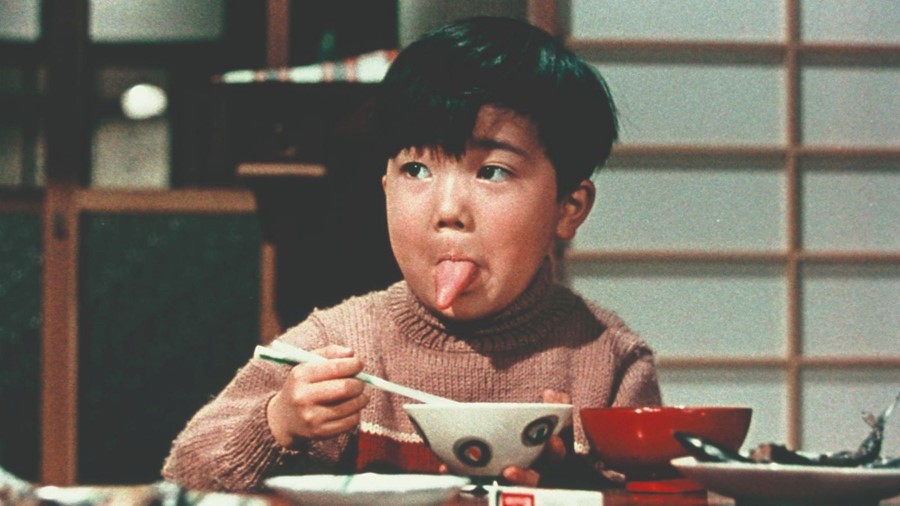As a new season at the BFI spotlights the director’s work, we look into six of Yasujirō Ozu’s restrained dramas, from Tokyo Story to Floating Weeds
Across the entire landscape of global cinema, few directors retain such high regard as Japan’s Yasujirō Ozu, whose restrained dramas – centring on family, marriage, and generational divide in an era of widespread change – would become the pillars of the country’s cinematic golden age. In September 2023, to mark the 120th anniversary of his birth, his legacy will be celebrated at the BFI Southbank and online via the BFI Player – with A Family Affair: The Films of Yasujirō Ozu, offering a month-long retrospective of the auteur’s powerful and poignant masterworks.
Famed for gentle works about everyday characters and quotidian life, Ozu was also renowned for a remarkably austere film grammar that has rarely been replicated with such precision. Across quiet, meditative films punctuated by contemplative silences and ellipses, the director would gradually reject all technical motion in favour of static camerawork interspersed with lingering shots of still life. A pioneer of the “tatami shot” – which placed the camera at an unnaturally low angle, as if it were the perspective of a person kneeling and gazing up at their surroundings – he would also frequently cut directly between the gaze of two speakers during dialogue scenes, placing the viewer right in the heart of the conversation. His was a language of tranquil simplicity; placing composition above everything else.
While Ozu’s films wouldn’t make an impact in the West until after his death (on his 60th birthday, in 1963), admiration has continued to intensify in the decades since – with enthusiasts ranging from Wim Wenders (who directed the 1985 Ozu documentary Tokyo-ga, also screening at the BFI) to the likes of Paul Schrader, Jim Jarmusch and Claire Denis. In the East, meanwhile, his influence can be traced in the works of Taiwanese auteur Hou Hsiao-hsien – who directed Café Lumiere in homage to Ozu in 2003; Korean mumblecore maestro Hong Sang-soo; and even horny Japanese “pink” films like Abnormal Beauty – a testament to the broad influence of his output.
To mark the commencement of the BFI’s month-long celebration, AnOther picks six career highlights through which to explore the work of the Japanese master. Find them below.

I Was Born, But… (1932)
Though Ozu’s postwar works remain his most celebrated, he was already an acclaimed filmmaker prior to the Second Sino-Japanese War – for which he was conscripted into the army in 1937. Sadly, only 15 of Ozu’s 34 silent films still exist today – the rest, along with thousands of other Japanese productions, were lost during the fire-bombing of Tokyo at the height of World War Two, or have otherwise deteriorated beyond repair due to the fragility of early film stock.
I Was Born, But… – the first of six Ozu works to receive the Kinema Junpo Award for Best Film of the Year in Japan; later loosely reimagined by the director as Good Morning in 1959 – is one of the few that survives. It’s the moving story of two brothers – identically dressed in oversized cable knits, caps and shorts – who are targeted by a bully after they enrol in a new school just across the train tracks.
Their ambitious plans to avoid a pummelling – punctuated by hilarious shots of huge playground brawls, and the war-like mobilisation of young boys in the schoolyard – initially mark the film as an innocent, Buster Keaton-esque comedy. But eventually, the boys become enlightened to the hypocrisies of the society that awaits them in adulthood – manifested by the subservience of their corporate-job-working father to his boss. They ultimately rebel against him by going on hunger strike; a poignant protest during a time of economic hardship in Japan.
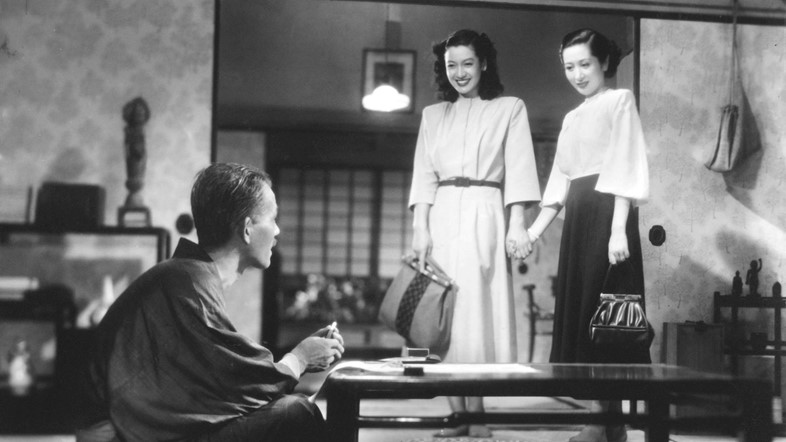
Late Spring (1949)
The late 40s marked the beginning of Ozu’s major commercial success, as a recognisable style – built on low-angle cameras, intimate dialogue scenes, and picturesque interstitial shots – became firmly apparent. Late Spring would be a prototypical example of almost every subsequent Ozu film – with its basic narrative, concerning a doting young woman resisting the pressure to marry at her widowed father’s insistence, recycled repeatedly hereafter. And why not? It’s a near-perfect film; still the 21st greatest of all time according to Sight & Sound’s once-a-decade critics’ poll in 2022.
The basic conflict of tradition and modernity – crucial in 1949 during the Allied Powers’ Occupation of Japan in the aftermath of World War Two – is powerfully evoked through the opposing viewpoints of Noriko and her well-intentioned father, but also through the images Ozu lingers on elsewhere. Late Spring, after all, is a film that depicts ornate shrines, towering pagodas, and tea ceremonies – but elsewhere, captures street signs that read ‘Drink Coca-Cola’, and conversations about Hollywood heartthrob Gary Cooper. The times are changing – and crucially, it remains unclear which path will lead Noriko to happiness.
Incidentally, this captivating central character would be played by one of Ozu’s most enduring muses: Setsuko Hara, who appears in the first of six unforgettable collaborations with the master filmmaker here. With doe-eyes and a bright, beaming smile, Hara is magnetic opposite ubiquitous Ozu performer Chishū Ryū (Tokyo Story). “We would sigh or let out a great breath from the depths of our hearts,” novelist Shūsaku Endō once wrote of her on-screen gravitas – a fitting proclamation for her presence here.
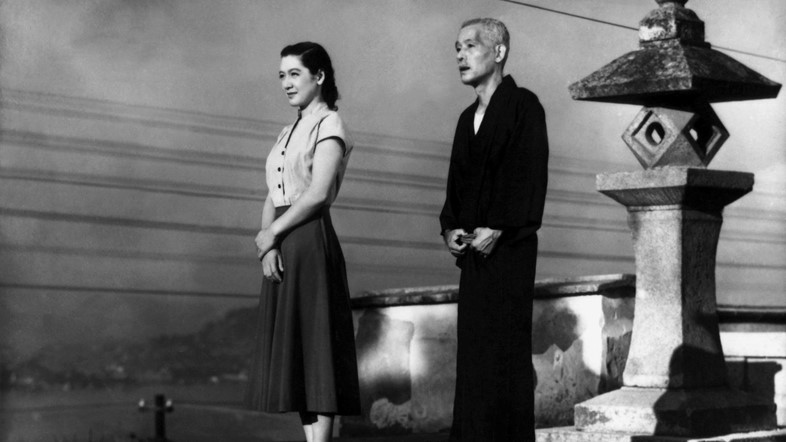
Tokyo Story (1953)
It’s hard to argue for a better entry point into Ozu’s career than the perennial classic Tokyo Story. Quite simply one of the most pure and perfect quiet dramas in the history of filmmaking, this gentle meditation on the declining fortitude of family ranked fourth in Sight & Sound’s poll of the Greatest Films of All Time in 2022 – beaten only by Citizen Kane, Vertigo and Jeanne Dielman. On its 70th anniversary, for which the BFI presents a new restoration of the masterpiece, it remains utterly essential viewing.
Tokyo Story follows an elderly couple as they take a trip to the city to visit their adult children – only to discover that they are too busy with work to pay them much attention. There are no major confrontations nor arguments found within this cumulation of interactions, though; instead, contemplative silences hang heavy with a sense of solemn resignation.
Few Ozu images remain as moving as those witnessed here – including that of an empty pair of sandals in the foyer of a hot springs spa; the deserted corridors of a once-busy home; and the elderly Shūkichi (Chishū Ryū) gazing out across the ocean with his daughter-in-law (Setsuko Hara) by his side. Combined, they amount to a remarkably touching viewing experience.

Equinox Flower (1958)
By the time of Equinox Flower — the tale of a well-to-do father (Shin Saburi) whose daughter (Ineko Arima) decides to forego traditional arranged marriage – Ozu had done away with tracking shots entirely, committing to an utterly static form of filmmaking that leant greater reverence to his characters and composition. In the same film, Ozu also took a giant leap forward when at the behest of Shochiku studios – keen to showcase the beauty of actor and 1950 Miss Nippon pageant winner Fujiko Yamamato — he decided to shoot in colour for the first time.
The film begins in a familiar Ozu setting: the train station, where rail staff gaze upon attractive women on the platforms as disruptive winds loom. But after cutting to a wedding procession marked by beautiful gowns, blooming flowers, auburn wallpaper and a magnificent painting of Mount Fuji, the weight of the aesthetic upgrade soon begins to reveal itself. Hereafter, even the simplest scenes become impactful through the presence of colour – witnessed in bright neon street signs; baby pink cardigans; healthy bamboo greens; and glowing orange soft drinks.
Famed critic Roger Ebert was particularly taken. In 1992, he described one sequence in Equinox Flower (featuring a bright red teapot) as “as perfect as any music ever written, any dance, any poem”.
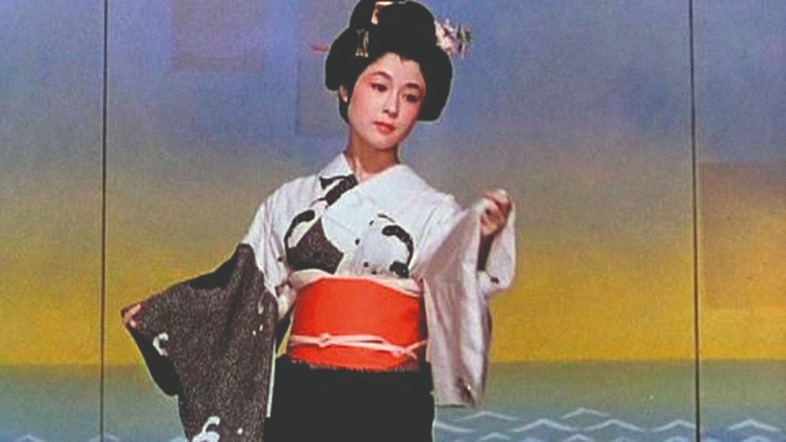
Floating Weeds (1959)
It’s often said that Ozu made the same film over and over again. Indeed, the director once described himself as “like a painter who keeps painting the same rose” – while The Guardian would liken him to Jane Austen in 2014, addressing a shared concern with telling “the same perfectly satisfying story” about family and filial matters throughout their careers. But in the strictest terms, Ozu has only remade his own work properly on one occasion – with the painterly Floating Weeds offering a stunning visual transformation of the 1934 silent movie The Story of Floating Weeds.
There’s scarce narrative diversion between the two films – which both concern the arrival of an itinerant kabuki troupe at a sleepy seaside settlement and their subsequent encounters with the local townsfolk. But with the collaboration of revered cinematographer Kazuo Miyagawa (famed for his work on Akira Kurosawa classics Rashomon and Yojimbo; Kenji Mizoguchi’s Ugetsu; and the groundbreaking documentary Tokyo Olympiad), Floating Weeds is elevated to the point of being arguably Ozu’s most vibrant and sumptuous work. Never again did an Ozu film pop as much as this.
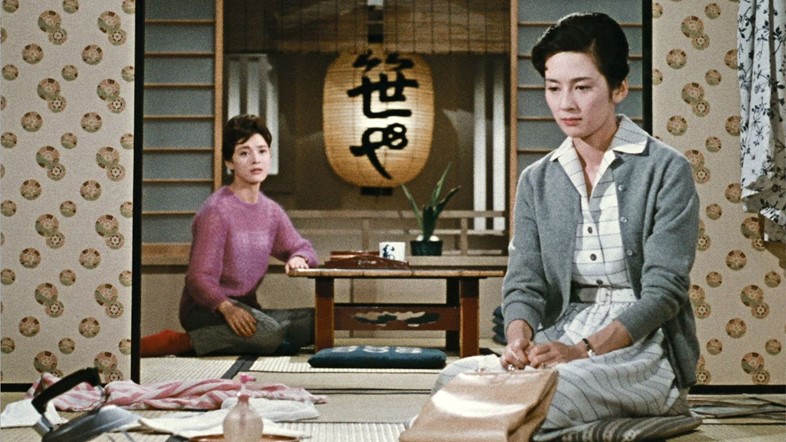
Late Autumn (1960)
“What to do about young people these days?” a woman sighs during one of the many long conversations that line Late Autumn. “Nowadays they all listen to rockabilly and that Presley,” another replies. “No wonder things like dyed flowers are in fashion!”
The cultural references are a lifetime away, but the story remains timeless: as one generation reaches the late autumn of their lives, another enters its springtime – and with that, a new set of morals and viewpoints begin to erode established traditions. As so often is the case with Ozu’s films, marriage is the microcosm through which this changing of ways is observed – and in Late Autumn, it’s a group of bumbling but well-intentioned men that struggle while attempting to play matchmaker for a resilient young bachelorette.
More muted than some of Ozu’s other colour works – shades of greys, browns and beiges dominate scenes in restaurants, coffee shops and homes – this late-career production, submitted by Japan for consideration at the 1961 Academy Awards, is an understated gem. Its enduring aura lies, in part, in the complex family tensions that bind young Ayako (Yoko Tsukasa) and her widowed mother Akiko (Setsuko Hara) – which ultimately lead to a bittersweet climax.
A Family Affair: The Films of Yasujirō Ozu is on show at the BFI in London throughout September 2023.
